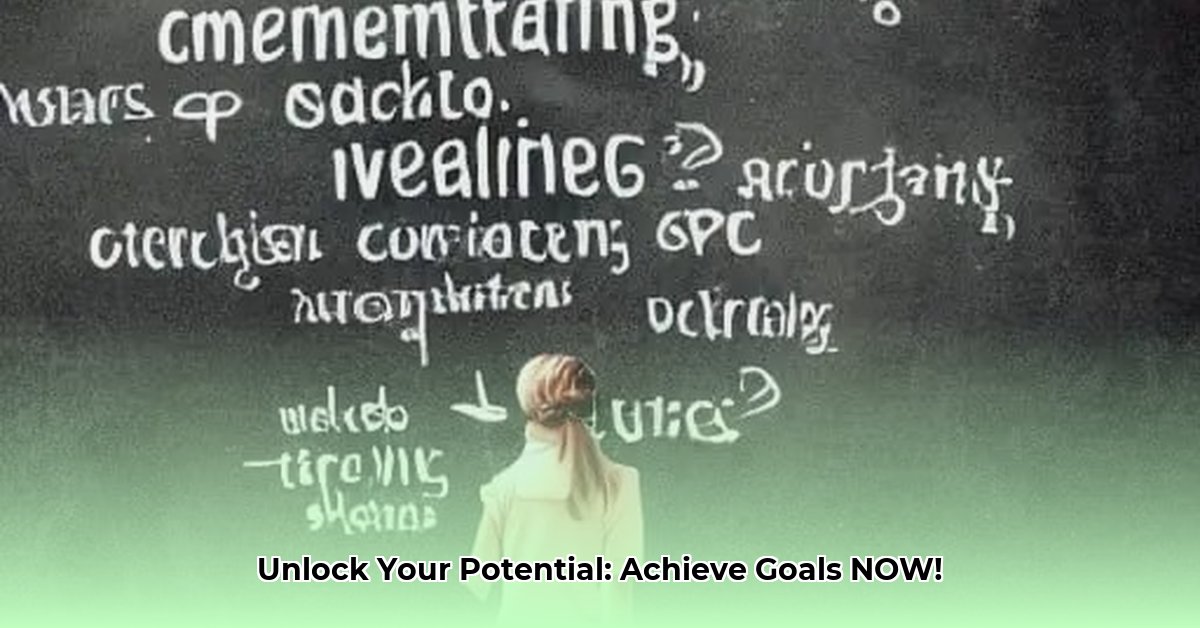Ready to transform your life? This isn’t about vague self-help; it’s a concrete strategy for becoming your best self. We’ll dive into personal growth, self-improvement, and self-development – exploring their unique meanings and applications. Consider this a personalized development plan for your mind, body, and spirit. We’ll cover setting goals, boosting emotional intelligence, and cultivating essential skills. Discover simple steps, supported by real-world examples, that anyone can implement to achieve their aspirations. Let’s begin!
Understanding Synonyms for Personal Growth: A Journey of Personal Transformation
Let’s explore the world of self-improvement, moving beyond generic self-help advice. Terms like “self-improvement,” “self-development,” and “personal growth” are often used interchangeably. While related, their subtle differences can significantly impact your approach. It’s similar to choosing the right tool for a specific task. Understanding these nuances allows you to tailor your strategy to your individual goals.
Deciphering the Buzzwords: Self-Improvement vs. Self-Development vs. Personal Growth
“Self-improvement” often targets specific weaknesses or areas you want to change. Do you want to stop procrastinating or improve your communication skills? It’s about targeted change, specifically addressing areas that need attention.
“Self-development,” on the other hand, is more expansive. It involves broadening your capabilities, gaining new skills, and accumulating knowledge. Think of learning a new language, mastering a new skill, or deepening expertise in a field you’re passionate about. It’s about expanding your overall skillset.
“Personal growth” is the overarching term, encompassing both self-improvement and self-development. It’s about evolving into a more complete and balanced version of yourself. It’s a holistic journey of self-discovery and transformation, going beyond fixing problems to actively shaping the person you aspire to be. It’s about embracing the whole you.
Creating Your Action Plan: Turning Concepts into Actionable Results
How do you translate these concepts into tangible progress? By creating a personalized plan tailored to your unique needs. Here’s a roadmap to guide you:
Step 1: Discover Your “Why.” Before taking action, reflect on your motivations. What drives you? What is your vision for your future? Writing down your aspirations creates a powerful sense of purpose and keeps you aligned with your long-term objectives.
Step 2: Develop SMART Goals. It’s essential to set goals that are effective. Use the SMART framework: Specific, Measurable, Achievable, Relevant, and Time-bound. For instance, instead of aiming to “improve your fitness,” set a goal to “walk for 30 minutes, four times a week, for the next month.” Breaking down large goals into smaller, manageable tasks prevents overwhelm and maintains motivation.
Step 3: Cultivate Self-Reflection. Regularly assess your progress. What have you learned? What challenges are you encountering? Consider journaling, meditation, or simply setting aside quiet time for reflection. These practices offer valuable insights into your journey and highlight areas that require attention.
Step 4: Invest in Skill Development. Identify areas where developing new skills could benefit you. Time management, communication, and creative problem-solving are valuable assets. Continuous learning through courses, workshops, books, and online resources will enhance your abilities and boost your confidence. Remember, this is a continuous process.
Step 5: Enhance Your Emotional Intelligence. This is often overlooked but critically important. Understanding and managing your own emotions, as well as developing empathy for others, fosters stronger relationships, reduces stress, and improves your overall well-being.
Step 6: Build Resilience – Your Ability to Bounce Back. Life inevitably presents challenges. Setbacks will happen. The capacity to adapt, learn from mistakes, and persevere is essential. Focus on your strengths, cultivate a supportive network of friends and family, and remind yourself that setbacks are temporary learning experiences that can lead to development and growth.
Taking a Holistic Approach to Growth and Self-Improvement
Personal growth encompasses more than just one aspect of your life. It involves nurturing your physical, emotional, intellectual, and spiritual well-being. Consider this a comprehensive approach, like tending to a garden – each aspect requires care for the whole to thrive. Here’s a practical framework:
| Aspect | Practical Strategies | Potential Benefits |
|---|---|---|
| Physical | Regular exercise (strength training, cardio, flexibility), balanced nutrition (whole foods, hydration), sufficient sleep (7-9 hours) | Increased energy, improved mood, enhanced physical health, reduced risk of chronic disease |
| Emotional | Mindfulness practices (meditation, deep breathing), stress-management techniques (yoga, nature walks), emotional expression | Reduced stress and anxiety, improved emotional regulation, stronger relationships, increased self-awareness |
| Intellectual | Reading (books, articles), learning new skills (online courses, workshops), engaging in critical thinking (debates, puzzles) | Enhanced problem-solving abilities, increased creativity, improved cognitive function, expanded knowledge base |
| Spiritual | Meditation (mindfulness, guided), connecting with nature (hiking, gardening), pursuing personal values (volunteering, creative hobbies) | Increased inner peace, stronger sense of purpose and meaning, enhanced self-compassion, improved connection with something greater |
Personalizing Your Path: Tailoring Your Journey to Self-Development and Personal Fulfillment
Remember, there’s no universal solution. What works effectively for one person might not resonate with another. Experiment with various strategies, identify what aligns with you, and adjust your approach as needed. Your journey is unique and tailored to you. Adapt, learn, and evolve.
Choosing Your Words: Framing Your Growth for Personal Evolution and Positive Change
The language you use to describe your journey significantly influences your perspective. Choosing the most suitable terms – self-improvement, self-development, or personal growth – will clarify your focus. Are you addressing specific weaknesses, expanding your skillset, or undertaking a profound transformation? The choice is yours. However you choose to frame it, keep in mind that this is your unique path, your growth, and ultimately, your success.
How to Choose the Best Personal Development Approach for Your Specific Needs
Key Takeaways:
- Personal growth is an ongoing journey of consistent learning and evolution.
- Effective self-improvement combines structured planning with deep self-awareness.
- Goal setting, self-reflection, and continuous learning are essential components of success.
- A growth mindset, emotional intelligence, and resilience are critical for navigating challenges and setbacks.
- Customize your approach to align with your unique needs, aspirations, and values.
Personal Growth’s Many Facets and Self-Actualization
The pursuit of self-improvement is multifaceted. We often discuss personal development, self-improvement, and self-actualization. These concepts are interconnected but have distinct meanings. Self-improvement often concentrates on specific skills or habits. Personal development encompasses a broader scope, including emotional intelligence and well-being. Self-actualization, following Maslow’s hierarchy of needs, represents achieving one’s full potential. Therefore, understanding how to choose the best personal development approach for your specific needs becomes critical.
Designing Your Personal Growth Plan for Self-Development and Self-Improvement
Selecting the appropriate strategy involves deep self-understanding rather than finding a quick-fix solution. What are your greatest obstacles? Where do you envision yourself in one year, or five years? Honest self-assessment is essential.
- Define Your Goals: Implement SMART goals (Specific, Measurable, Achievable, Relevant, Time-bound). If you aim to improve your public speaking, set a goal to deliver a presentation at a conference within six months.
- Practice Self-Reflection: Journaling, meditation, or setting aside time for quiet contemplation can uncover hidden patterns and beliefs. Identify your strengths and weaknesses.
- Commit to Continuous Learning: Actively seek new opportunities to gain knowledge and skills. Read books, listen to informative podcasts, or take online courses. Personal growth is a lifelong pursuit of self-improvement.
- Build a Supportive Network: Associate with individuals who encourage and support your growth. Find a mentor or participate in a relevant community.
Combining Different Approaches for Holistic Growth and Personal Well-Being
Personal growth extends beyond one area of your life. It is holistic, encompassing your mental, emotional, physical, and spiritual health. Visualize it as a wheel; if one spoke is weak, the entire wheel is unstable.
| Area | Strategies | Example |
|---|---|---|
| Emotional | Mindfulness, emotional regulation techniques, practicing gratitude, setting healthy boundaries | Practicing meditation, journaling, seeking therapy, building healthy relationships |
| Intellectual | Reading, learning new skills, critical thinking, engaging in stimulating conversations, playing strategy games | Taking an online course, joining a local book club, learning a new language |
| Physical | Exercise, healthy eating, sufficient sleep, regular health checkups, staying hydrated | Engaging in regular workouts, preparing balanced meals, prioritizing restful sleep |
| Spiritual | Reflection, nature connection, mindful practices, volunteering, practicing acts of kindness | Spending time in nature, practicing yoga, volunteering in your community |
Making It Personal: Customizing Your Approach to Personal Growth and Self-Development
The beauty of personal development lies in its adaptability. There isn’t one single method for everyone. Strategies that work for one person might not be effective for another. Experiment, adapt, and discover what resonates with you. Don’t hesitate to adjust your approach as you grow and evolve. Successfully answering how to choose the best personal development approach for my specific needs requires continuous review and modification.
Unleash Your Potential: Effective Techniques for Personal Growth in Challenging Situations, Cultivating Resilience, and Coping with Stress
Key Takeaways:
- Establishing clear goals is essential for personal advancement and continuous development.
- Resilience and adopting a growth mindset are critical for overcoming obstacles and navigating difficulties.
- Self-care practices are crucial for overall well-being and long-term progress.
- Self-reflection supports self-awareness and deeper self-understanding.
- Personal development represents a continuous journey, not a final achievement.
Defining Personal Growth: Going Beyond Self-Improvement and Goal Achievement
The term “personal growth” is frequently used. But what does it truly represent? Understand it as the continuous process of enhancing yourself—physically, mentally, and emotionally. It’s about broadening your skills, gaining deeper self-awareness, and becoming more adaptable. It goes beyond mere self-improvement.
This journey is especially vital when navigating demanding and high-stress environments. Your capacity to adapt and thrive rests on your inner strength and resourcefulness. Unleash Your Potential: Effective Techniques for Personal Growth in Challenging Situations becomes critically important.
Maximizing Goal Setting: Creating a Roadmap to Success and Continuous Personal Advancement
Effective goal setting provides the groundwork. Abandon vague aspirations; instead, formulate SMART goals: Specific, Measurable, Achievable, Relevant, and Time-bound. What concrete actions can you take each week, month, and year to advance toward your desired vision?
- Step 1: Determine your top 3-5 key goals.
- Step 2: Divide each goal into smaller, manageable actions.
- Step 3: Establish a timeline with specific deadlines.
- Step 4: Monitor your progress routinely, making necessary adjustments.
Developing Resilience: Bouncing Back Stronger, Managing Setbacks, and Thriving Under Pressure
Resilience involves navigating challenges with grace and resolve, not avoiding setbacks altogether. How effectively do you manage stress and adversity? Do you tend to focus on failures, or do you view them as opportunities for learning and growth?
Building resilience includes:
- Developing a positive mindset by focusing on your strengths and past successes.
- Practicing self-compassion by treating yourself with kindness and empathy.
- Building a strong support system by connecting with loved ones.
Harnessing the Power of Self-Reflection: Gaining Deeper Self-Knowledge for Personal Evolution
Self-awareness is critical. Consistent self-reflection enables you to identify your strengths and weaknesses, comprehend your emotional reactions, and adjust your strategies as needed. This might involve journaling, meditating, or simply setting aside time each day for quiet contemplation. Key questions to ask include: What recurring patterns do you observe? Where do you need to grow and develop?
Combining Holistic Strategies: Creating a Well-Rounded Approach to Self-Improvement for Sustainable Outcomes
Personal growth isn’t a one-size-fits-all strategy. You might integrate different aspects such as physical health (exercise, nutrition), mental health (mindfulness, stress management), and emotional health (building self-esteem, enhancing relationships). A comprehensive approach provides the most effective results. What areas need more of your attention?
Personalizing Your Journey: Tailoring Your Path to Self-Development and Transformation
Remember, there’s no single formula for growth. What works for one person might be ineffective for another. Identify what resonates with you and what encourages your personal growth.
Mastering Self-Development: A Structured Approach for Holistic Well-Being, Continuous Growth, and Sustainable Personal Evolution
Key Takeaways:
- Deep self-awareness is essential for recognizing your strengths, weaknesses, values, and motivations.
- Establishing clear and achievable goals provides direction and motivation for personal growth.
- Holistic well-being involves balancing physical, emotional, mental, and spiritual health.
- Continuous learning and adaptation are vital for remaining relevant and thriving in a changing world.
- Personal growth is a journey, not a final destination, so remain open to new experiences and celebrate your progress.
Understanding the Landscape of Personal Growth and Self-Improvement
What does genuine personal growth actually involve? It represents more than simple self-improvement. Instead, it is a holistic transformation incorporating every aspect of your being. Think of it as constructing a house: you need a strong foundation (self-awareness), sturdy walls (goal-setting and action), and a beautiful interior (emotional and spiritual well-being).
Terms like self-development, self-improvement, and personal evolution are frequently used as synonyms, but subtle nuances differentiate them. Self-improvement usually concentrates on specific capabilities or habits, while self-development adopts a broader perspective, considering your complete potential. To achieve Mastering Self-Development: A Step-by-Step System for Holistic Growth and Sustainable Well-being requires embracing all these various aspects.
Practical Techniques for Transformation and Competency Development
Here’s a practical roadmap:
Step 1: Conduct a Self-Assessment and Set Goals
- Assess your strengths and weaknesses with complete honesty. What specific areas require improvement?
- Set SMART goals: Specific, Measurable, Achievable, Relevant, and Time-bound. Break larger goals into smaller, more manageable steps.
Step 2: Enhance Self-Awareness
- Practice mindfulness and meditation to gain better understanding of your thoughts and emotions. Journaling also can prove beneficial.
- Request feedback from trusted friends, family, or mentors. External perspectives can provide valuable insights.
Step 3: Develop Emotional Intelligence and Manage Emotions
- Learn successful techniques to manage your emotions. Develop robust coping mechanisms for stress and adversity.
- Improve your communication skills. Practice empathy and active listening in your interactions with others.
Step 4: Pursue Continuous Personal Growth and Develop Core Skills
- Determine what skills are needed to achieve your specific goals. Engage in relevant courses or workshops to enhance these capabilities.
- Commit to continuous, lifelong learning. Read books, listen to podcasts, and actively participate in seminars and workshops.
Step 5: Integrate Sustainable Holistic Well-Being
- Prioritize your physical health through regular exercise, eating nutritious foods, and ensuring adequate sleep.
- Participate in activities that revitalize your spirit: Spend time in nature, engage in hobbies you enjoy, and connect with loved ones.
Step 6: Secure Support, Build an Accountability Systems, and Develop Sustainable Personal Evolution
- Find a mentor, coach, or join a support group to gain useful guidance and encouragement along your journey.
- Share your progress with others. Accountability groups or partners are helpful to remain on track and stay motivated.
Sustaining Your Growth, Holistic Well-Being, and Enhancing Self-Improvement
Remember that personal growth is a marathon, not a sprint. Regular self-reflection is essential. Periodically assess your advancement and modify your plans as needed. This represents a journey of constant learning and adaptation. Celebrate your achievements along the way and embrace setbacks as critical opportunities to learn and grow further.
- Unlock Work-Life Harmony:Your Guide to Integration - November 27, 2025
- Find Your Work-Life Balance Quotes: Achieve Harmony Now - November 25, 2025
- Unlock Physician Assistant Work Life Balance: Your Guide to Fulfillment - November 23, 2025
















